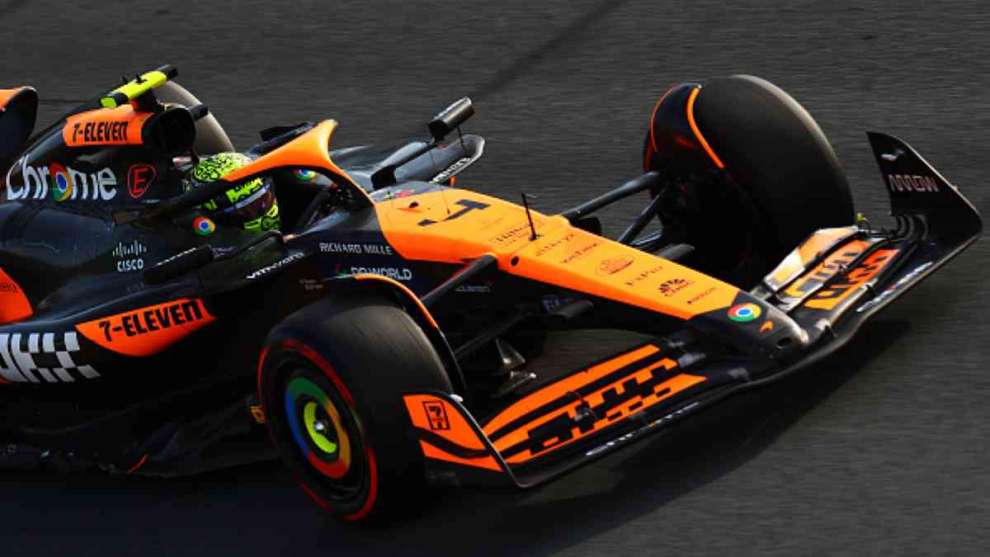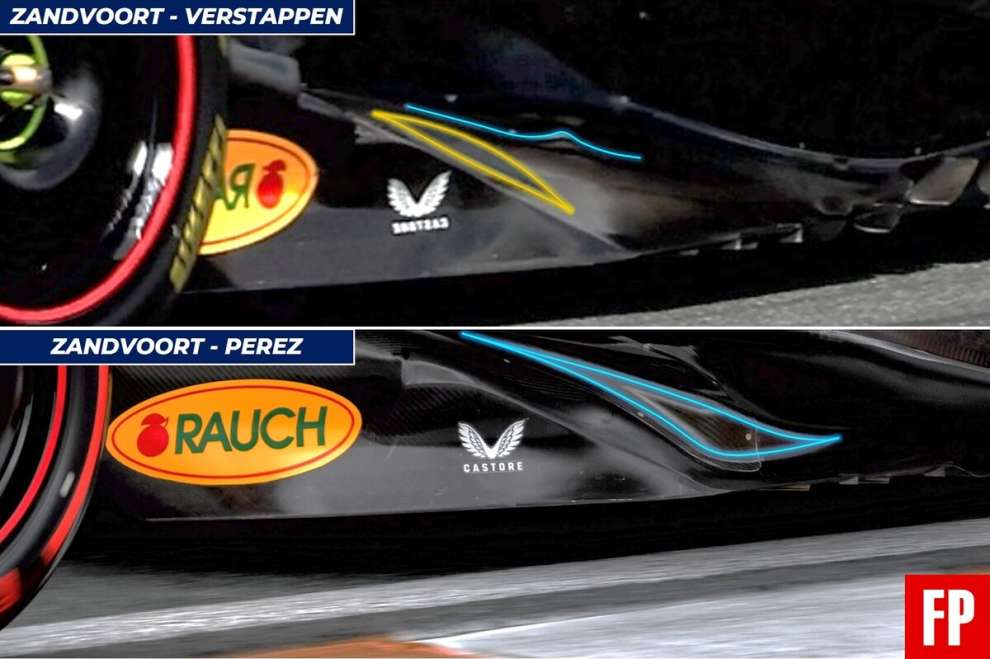By Carlo Platella
Since before the summer break, Frederic Vasseur has had his eye on the Grand Prix after the Dutch one, defining them as more favorable to the characteristics of the Ferrari. There are even those, like Fernando Alonso, who believe that between Monza, Baku and Singapore, the Red will be the car to beat. Attributing the role of favorite for the home race to the Prancing Horse actually seems excessively optimistic, but there are still several reasons to witness a a more competitive Ferrari than the one seen in Holland.
The updates
The first reason for hope for Maranello is the arrival in Monza of the third seasonal evolutionary package, the first since the Spanish Grand Prix last June. The prerequisite for a competitive weekend for Ferrari will be to find a perfect match between the behavior of the updates on the track and what is expected in the factory. The priority of the new package is reduce bouncing sensitivity which the SF-24 has been suffering from since the start of the season and more acutely since the Barcelona race. Fast corners such as the Parabolica-Alboreto and the Variante Ascari will be crucial to verify whether the problem is finally under control.
In recent months, bouncing issues have significantly affected the performance of the Reds in fast corners, especially at Silverstone. At Spa, however, the Prancing Horse had used a compromise set-up, raising the car to reduce sensitivity to porpoising, but thus sacrificing part of the aerodynamic load from the floor. The overall aerodynamic efficiency was damaged, also paying the price on the straight. Getting rid of bouncing at Monza would allow you to regain efficiency and speed on the straightwith the hope of returning to the levels of the beginning of the season when Ferrari stood out in the high-speed corners.
Another reason for optimism for the Prancing Horse at Monza is the lack of long, medium-low speed corners. This is a chronic weak point of the SF-24, exposed by the many hairpins at Zandvoort, in particular the difficult turn 10. Finally, in Italy we return to racing in a Mediterranean climate, with ambient temperatures expected to exceed 30°C. Conditions that Ferrari has shown it appreciatesoften managing to hit the optimal operating window of the tyres.
McLaren at 50%
The spotlight on the eve of the race is all on last Sunday’s winners. It couldn’t be otherwise, with Lando Norris capable of inflicting an average gap of over 3 tenths per lap on both Verstappen and Leclerc in the second half of the race, with the unknown of how much the Briton was really pushing to the limit. But Monza is not Zandvoortwhose hairpin bends enhanced the high load released by the McLarens at medium-low speeds. Furthermore, it is unlikely that in Italy the Woking team will find the mild temperatures so welcome to the MCL38s, encountered instead in Holland.

The main concern, however, concerns the performance with the minimum load configuration typically adopted for Monza. Compared to last season, McLaren has made progress in terms of low load efficiency, but at Spa Team Principal Andrea Stella admitted that the development on this front was incomplete: “I think that we are at 50% of the work. I am convinced that in high downforce configuration the car is well placed and that it does exactly what we want, especially in terms of aerodynamic behaviour. However, we have not yet developed much in terms of lower aerodynamic drag”. It is a McLaren that certainly does not start out defeated in Monza, but which nevertheless appears more ‘human’ than the one appreciated in the dominant performances in Budapest and Zandvoort.
Red Bull Unknown
On high-efficiency tracks with high-speed corners, such as Monza, the world champions’ car remains the car to beat. “If we look at the high speed curves Red Bull is still by far the best car”Andrea Stella’s reflection in Zandvoort. On the other hand, the Milton Keynes team is experiencing a moment of confusion, with the difficulties in driving, balancing and set-up that emerged during the seasonal development.
To reconstruct the situation in Holland The two Red Bulls ran in different configurationswith Perez equipped with the early season bottom and Verstappen with the latest version. “The good thing is that now we understand what happens in the car“, the Mexican’s response. Now it’s all a question of how quickly we can solve the problems, but we know what they are and what we’re missing.” Red Bull heads to Monza with the unknown of what surface to use, but that’s not the only one. There is curiosity in fact to see if a dedicated aerodynamic package for low-downforce tracks will arrive from Milton Keynes, absent in the previous trip to Belgium.

Finally there is Mercedeswhose hopes for Monza are based on the competitiveness shown at Spa and Silverstone, other highly efficient tracks with plenty of fast corners. However, Toto Wolff is not convinced that the disappointing performance at Zandvoort is solely due to the characteristics of the Belgian track. A correlation with the new surface is not excluded, a candidate to be another special watch during the Italian weekend.
All new Monza
To the many unknowns is added then the recent resurfacing of the Autodromostill without rubber. The track is expected to evolve rapidly over the weekend, with teams called upon to adjust balance and load levels based on the actual level of grip that will be encountered. The kerbs deserve particular attention, lower than in previous editions, encouraging teams to stiffen the suspension mechanics to enhance the aerodynamics of the surface. The priority will be to exploit every minute available on the track, announcing a weekend to follow with interest right from free practice. A Grand Prix in which Ferrari is not arriving as a favourite, but nevertheless with many valid reasons to believe in a convincing performance.
#Ferrari #reasons #optimism #Monza
